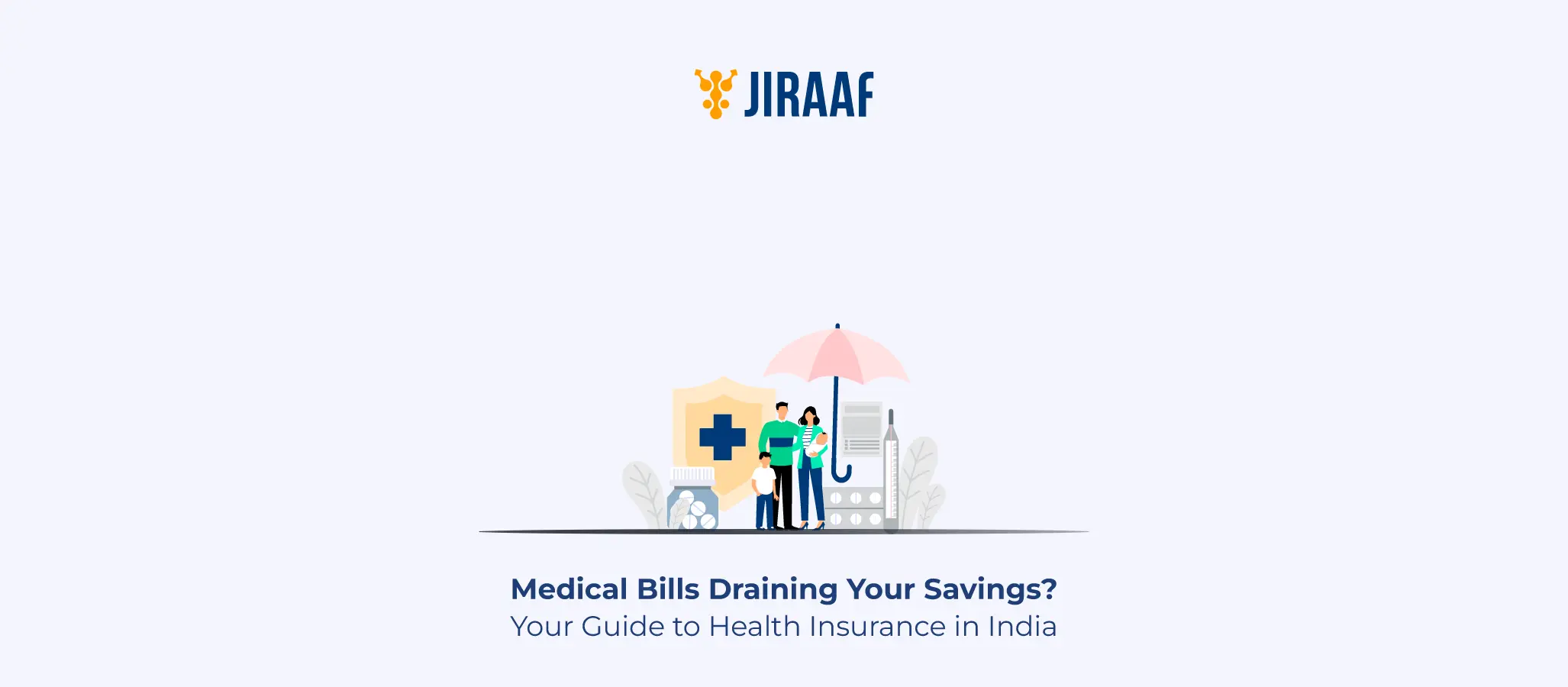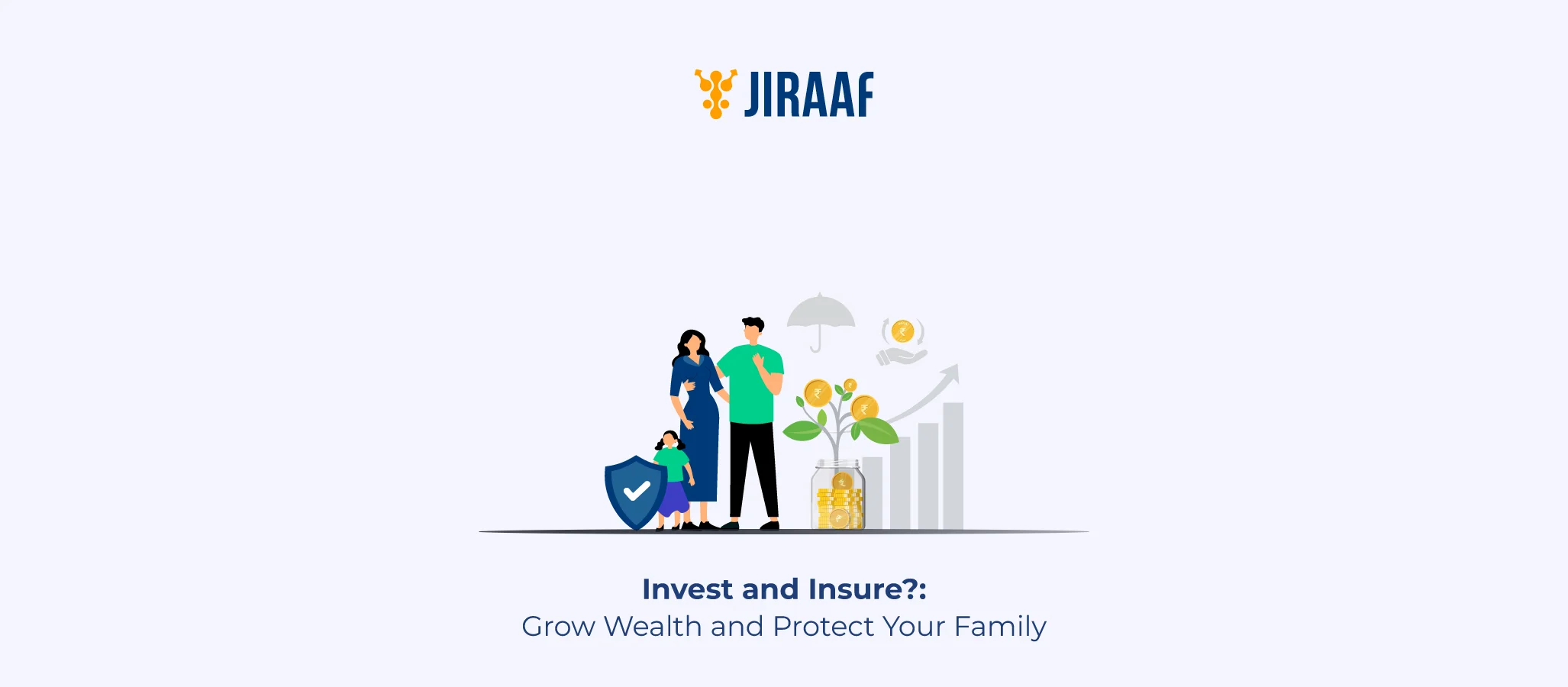Your money may be depleted sooner than you think due to an unexpected illness or accident. A single hospital stay can cost you ₹3 to 10 lakhs, which is enough to throw your financial stability off balance, given that medical expenses in India are rising by 12–15% a year. Your health insurance serves as a safety net for your finances, covering hospital stays so you can focus on getting better rather than worrying about payments. This blog will assist you, whether you’re healthy or managing an illness, whether you’re 25 or 55 years old, by understanding the basics of health insurance and finding the plan that best suits your needs, whether you’re a senior citizen, a family, or a student. Discover ways to save expenses and increase coverage. Stay clear of frequent mistakes that result in claim denials.
What is Health Insurance and How Does It Work?
In simple terms, a health insurance plan is an agreement whereby an insurer pays for your medical bills in return for premiums. This is how it works:
- Purchase a policy: Pay the annual premiums (for example, ₹10,000 for ₹5 lakh coverage).
- Hospitalization: Pay and claim later, or use cashless care at network hospitals.
- Settlement of claims: Bills are paid by the insurer upon settlement of the claim (up to the sum insured).
For example, a family was able to save ₹4.5 lakh on intensive care unit (ICU) expenses by purchasing a ₹10 lakh policy that covered COVID-19 therapy.
Benefits of Health Insurance
Did you know? 60% of Indians pay for their health care out of pocket, lacking health care services. To counter this, you must understand the many benefits of health insurance.
- Financial Protection: Pays for treatment in hospitals and hospitalization as well. (average cost of heart surgery: ₹3 lakh).
- Cashless treatment: Apollo, Fortis, and more than 10,000 network hospitals.
- Tax savings: Section 80D allows for a ₹25,000 deduction.
- Pre/post-hospitalization: This includes medications and testing 30 to 60 days before or following hospitalization.
- No-claim bonus: Up to 50% more coverage in exchange for years without a claim.
Types of Health Insurance Plans in India
There are primarily five types of health insurance plans in India:
- Individual plans: Offers coverage for one person. The average annual premium for a ₹5 lakh policy is between ₹5,000 and ₹12,000, depending on age. For example, for ₹5 lakh of coverage, a 30-year-old pays ₹6,500 per year. This is ideal for young adults and for you if you are looking for personalized plan.
- Family plans: These typically cover two to six family members within a single insurance policy and are 30–40% less expensive than individual family plans. The typical price is around ₹15,000–25,000 per year for a family of four with ₹10 lakh of coverage. The coverage limit is the same for all members.
- Plans for critical illnesses: Pays a lump sum (₹5–50 lakh) on the medical diagnosis of 30+ critical illnesses. This covers conditions such as kidney failure, heart attacks, strokes, and even cancer. The average claim is ₹8–15 lakh, according to industry statistics from 2023. Funds might be utilized for medical care or to restore lost income.
- Senior citizen plans: Plans are specifically designed for those aged 60 to 80 (some even up to 90) with rates of ₹20,000 to ₹50,000 per year for ₹5 lakh coverage. Mandatory waiting periods for pre-existing conditions must be between two and four years, and they frequently provide free periodic wellness check-ups.
- Group health insurance: This type is provided to you by your employer. 73% of business plans have coverage of ₹3-5 lakh on average. Your parents are also covered at an additional cost of ₹2,000–5,000/year. The limitation is that when you quit your work, your coverage terminates.
What is Covered Under Health Insurance?
A health insurance policy covers the following:
- Hospitalization (ICU, surgery, room rent).
- Day-care treatments (dialysis, chemotherapy)
- Pre-existing conditions (after two to four years).
- Ayurvedic and yoga treatments (AYUSH).
- Up to ₹5,000 in ambulance fees.
Key Features of a Health Insurance Policy
- Maximum Coverage limit of ₹1–50 lakh.
- 10 to 20% of your bills are co-paid in certain cases.
- The waiting period is 30 days for illnesses and 2–4 years for pre-existing conditions.
- Capping room rent, for example, at 1% of the daily total covered.
- Restoration benefits, after depletion, the money insured is restored.
- Most consumables are not covered.
Mediclaim vs Health Insurance: What’s the Difference?
| Feature | Mediclaim | Health Insurance |
| Coverage | Only hospitalization. | Hospitalization and outpatient department (OPD) wellness. |
| Flexibility | Basic. | Customizable. |
| Claims | Reimbursement only. | Cashless as well as reimbursement. |
| Premium | Affordable. | Slightly more expensive. |
Select health insurance for complete protection or Mediclaim for affordable hospitalization coverage.
How to Choose the Best Health Insurance Plan in India
Choosing the right health insurance plan means choosing what works best for you based on your needs, timeline, and, of course, your budget.
- Evaluate your needs: Location (metro premiums are greater), family size.
- Compare insurers: Examine the claim settlement ratios for different insurers.
- Read fine print: Examine the fine print for sub-limits and waiting periods.
- Add riders: OPD cover, critical illness.
- Lastly, look up network hospitals in your area.
Conclusion
Your health is priceless; protect it wisely. One of the best investments you can make for your family and yourself is health insurance; it’s not just another expense. Even while we cannot foresee sicknesses, we can at least budget for them. In essence, remember to start early, choose a good coverage plan, record your medical history, and make sure to use your tax benefits. When you can visit the greatest hospitals without worrying about costs, your future self will appreciate it. Protect your health now rather than waiting for an emergency.
FAQs for Health Insurance
Cashless treatment lets you get care at network hospitals without a hefty upfront payment. The insurer settles bills directly. Over 10,000 hospitals in India offer this facility.
Health insurance covers medical expenses during emergencies, preventing financial strain. It ensures access to quality healthcare without draining savings. Policies also offer tax benefits under Section 80D, making them cost-effective.
Mediclaim covers only hospitalization costs, while health insurance includes OPD, wellness, and critical illness, along with hospitalization. Health insurance offers cashless claims, whereas Mediclaim is reimbursement-only.
Policies cover hospitalization, day-care procedures, pre- and post-hospitalization, ambulance fees, and other relevant treatments. Some include maternity benefits (after 2–4 years) and annual health check-ups.
To evaluate and narrow down on a health insurance policy that works best for you, you must understand its coverage, claim ratios, network hospitals included, and what it excludes as well.
Discover fixed income investments with Jiraaf, a SEBI registered online bonds platform that educates and brings access to a wide array of bonds. Sign up today to explore diversified fixed income investment opportunities to support your goal-based wealth creation journey. Start investing!



